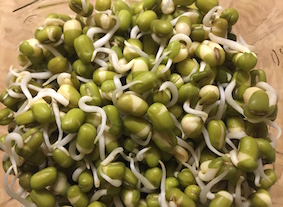+86- 11111111111
Boluo county dragon Lotus Lake Village Town Industrial Park, China

Salads are a critical part of my lunchtime diet. They are quick to make, and during the peak of the growing season they consist mostly of items from my own garden.
But once the last of my late-season lettuce, spinach, and kale are gone from my fridge, salads are almost completely off my mealtime list. I opt for a grain bowl with a farro or wheatberry base and things like beans, roasted broccoli, cubed sweet potatoes, homemade veggie broth—ingredients that fulfill a wintertime yearning for warmth and savory sustenance.
As winter turns to spring, I start to crave something fresh on these grain bowls. That’s when I start some indoor veggie gardening and reach for my jar of mung beans. Mung beans are hard, dry beans that will easily turn into snaps of crunch with a pea-like flavor if taken through the sprouting process. When sprouted, the root extends about ¼ to ½ inch beyond the swollen but crunchy bean. They’re perfect for salads and can be added to home-cooked Asian dishes.
Sprouting mung beans is easy and takes just a few days. The secrets to the process are moisture and darkness. Here’s how to do it:
Perhaps the best thing about this type of gardening is that no soil is required. When they’ve sprouted to your satisfaction, place mung beans in a quart glass jar and keep them in the fridge. These should keep for 2-3 days. As with anything, if you see or sniff anything unusual, be wary of eating.